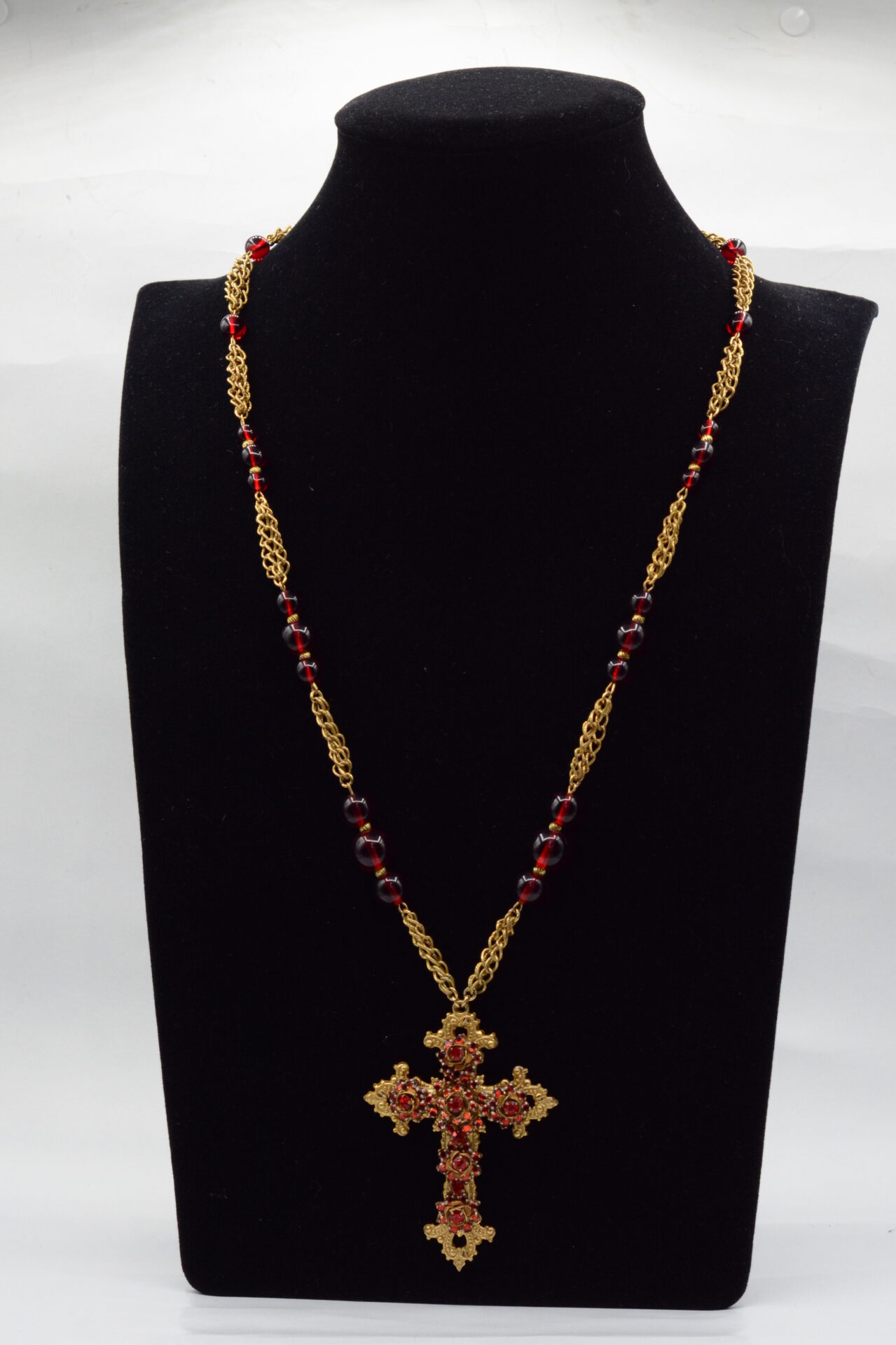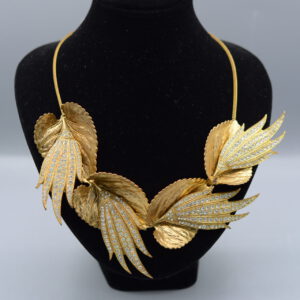Description
Stanley Hagler necklace with cross. Stanley Hagler (1923–1996) was an American costume jewelry designer celebrated for his elaborate, colorful, and transformative creations. Known as “the Picasso of jewelry,” he crafted pieces that were as artistic as they were wearable.
Hagler started his design career in the late 1940s as an assistant (or advisor) to renowned designer Miriam Haskell.
In 1953, he launched his own company—Stanley Hagler Jewelry Co. or Stanley Hagler Inc.
His pieces are defined by intricate detail, hand-wired construction, and the use of premium materials like hand-blown glass, Swarovski crystals, Russian gold-plated filigree, and baroque faux pearls (some dipped up to 15 times in pearl resin).
Everything—front and back—was finished to perfection, with stones prong-set (not glued).
A hallmark of his work was multi-functionality: necklaces could become bracelets, clasps transformed into hair accessories or brooches, and earrings could be modified with
Hagler earned the Swarovski Design Award a record 11 times during his career.
His jewelry was carried by major department stores like Saks Fifth Avenue, Bergdorf Goodman, Lord & Taylor—and featured in Vogue magazine—and became popular internationally.
Notable clients included the Duchess of Windsor, Ivana Trump, Barbara Walters, Madeleine Albright, Susan Lucci, Candice Bergen, Diana Ross, Elizabeth Taylor, and Joan Rivers.
In 1979, designer Mark Mercy joined his company; in 1989, Ian St. Gielar became chief designer.
The mark on the jewelry evolved: early pieces were stamped “Stanley Hagler”; post‑early‑1980s pieces were marked “Stanley Hagler N.Y.C.”
Hagler retired to Florida in the early 1990s due to ill health and passed away in 1996.
After his death, both Mercy and St. Gielar continued producing jewelry under variants of the Stanley Hagler name. A trademark dispute ensued; St. Gielar’s studio (later run by his apprentice Valentina) operates under Stanley Hagler N.Y.C. & Co. today.
Hagler’s work continues to be highly collectible, featured in museum exhibitions.




